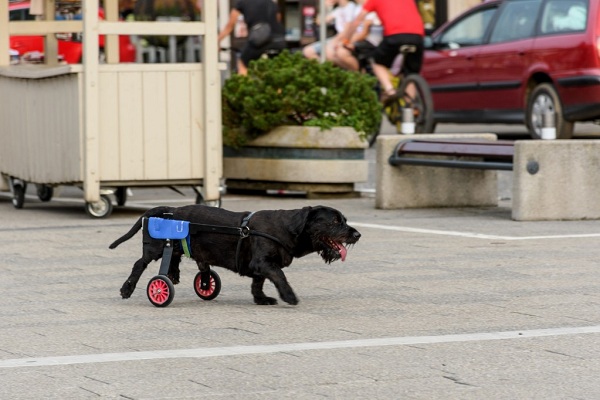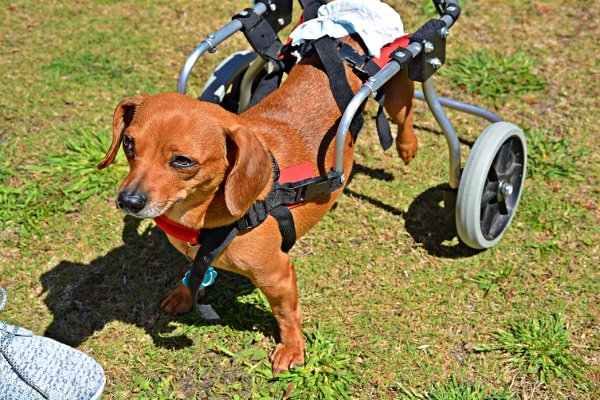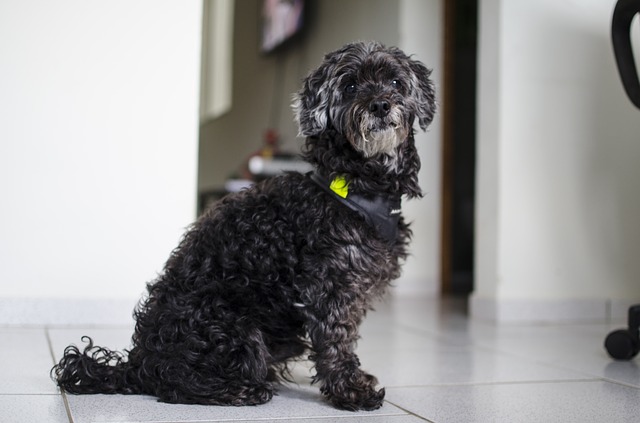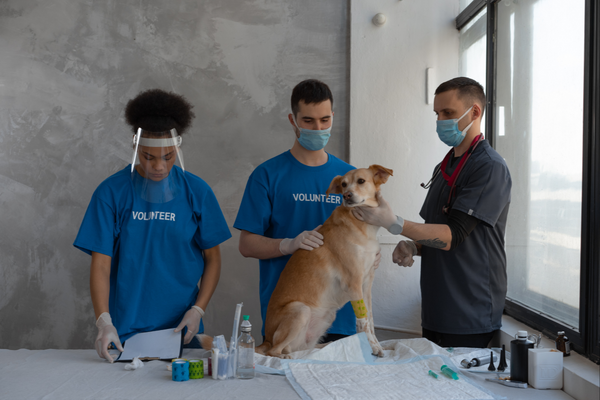Support, compassion, and love are essential for your paralyzed pet. Your love and care for your pet go beyond petting them – when they need more help than just general care, like in cases of injury recovery, chronic pain, terminal ailments, and paralysis.
Dogs suffer permanent damage to their hind limbs or sometimes all four limbs, which makes them paralyzed. Taking proper care requires more than carrying them to places and giving them sufficient rest.
You do not have to panic or feel helpless in this scenario. The condition does not stop your pet from living a healthy and active life. With a bit of change and little extra support, your fur friend can live long and active like any other healthy dog.
What are the Causes of Paralysis in dogs?
- When your dog suffers from weak limbs, it is due to Paresis – a condition when the animals cannot move their limbs. Paralysis can be of two types – temporary and permanent of the limbs.
- Some pets may experience only partial paralysis, which is treatable through proper medication and therapies. Some dogs require surgeries and other procedures. Hence, that calls for a little extended process of recovery.
- There are several possibilities for loss of mobility in dogs, and paralysis is one example. When Intervertebral disc diseases erupt in animals, it results in paralysis. Sudden trauma, injury of the spine, accident by falling or hit, a tumor near the spinal area, and infections (bacterial or viral) are some of the causes of paralysis in dogs.
- Some pets also have congenital problems that result in such conditions. Once you identify the reason behind the medical condition, it becomes easier for you to work on the treatment and recovery.
Tips for caring for paralyzed dogs – support and compassion
When you identify your pet’s physical condition, the foremost thing to remember is not to pity the animal. Encourage, support, and shower loads of compassion to help them recover fast.
Remember that dogs have a profound sense of smell, and they are capable of smelling your fear and anxiety – you do not want your furry friend to feel demotivated. You can always bring extra comfort to assist your dog in leading a normal pet life.
#1 Effleurage massage:
- You can start with gentle strokes of hand massage for your paralyzed dog. It is a simple technique that uses the palm and fingers to use light pressure and strokes. The special massaging method helps in improving blood circulation and lymphatic drainage.
- When the limbs don’t move, it becomes harder to make the fluid pass the organs. This eventually makes it more painful and stiff. Massages are ideal alternative therapies to relieve bone and muscle problems. A soothing sweeping motion of palm and fingers on the body helps your dog release all the pain.
- You can seek a professional massage therapist or start the massage yourself at least twice daily. The best method is an open palm with an upward stroke moving gently from limbs toward the heart.
#2 Alternative bodywork:
You can check with the vet to get an alternative therapy for your paralyzed dog. You can use a combination of two treatments parallel to the medications. Help your pet relax more and reduce the movement of the limbs. You cannot afford further damage to joints and muscles.
Try regular bodywork to minimize muscle soreness and decrease joint pain. You can check for acupuncture, laser therapies, chiropractic, and several types of massages.
Some dogs get relief with an alternative treatment, while some do not. It is best to check with the vet before you decide and observe how your pet responds to the treatment.
#3 Harness/cart/wheelchair:
When you find the paralysis is permanent, you must invest in premium quality harnesses and support for your dog. A great cart or wheelchair can give your dog the independence to stay active.
When the limbs don’t work, weight gain becomes an issue with dogs. With a robust machinal support system, you help them move around and combat the limitations of paralysis.
#4 Nerve stimulator:
Your dog’s nerves may or may not become dead after paralysis. But, it is always better to keep trying the various treatment methods. Nerve stimulation is one such technique.
It helps in sending signals to the brain through the limbs. You can try tickling, squeezing, and petting your dog’s limbs, torso, and back to release the sensation to the brain. Temporary paralysis can use this method for improvement, and permanent paralysis can consider this method for generic stimulation.
#5 Orthopedic bed:
Your paralyzed four-legged friend needs more relaxation than any normal dog, and it is best to order a special resting bed. You can get specially designed memory foam orthopedic beds that support aching joints.
If you live in a colder country, check for a heated bed that provides extra comfort on those frosty nights. The constant heat and soft foam will help relax the muscles and reduce stiffness.
Conclusion
Besides the five methods of care and support for your pet, you can try working on the diet and meals. Supplement your dog’s food with anti-inflammatory ingredients. You can also try Omega fatty acid tablets, turmeric, a high-protein diet, and fiber-rich meals.
Your dog may struggle with bowel movements. So, it is better to keep the diet light and easily digestible. Your dog will require more than a healthy diet, constant support that you can provide by moving their bed to a warmer space, restricting their staircase usage, and keeping multiple rugs that help them move without slipping.

 DogExpress
DogExpress




















 in Chandigarh, India.
in Chandigarh, India. 
